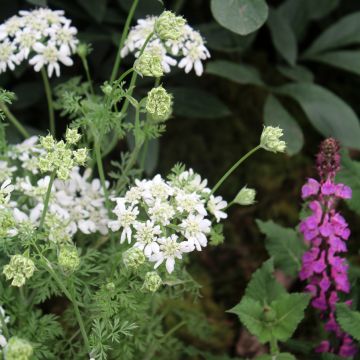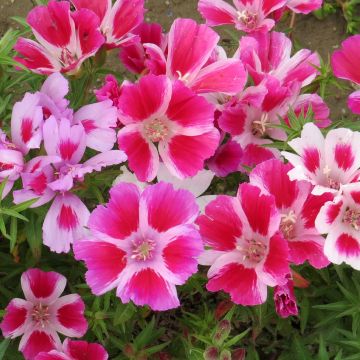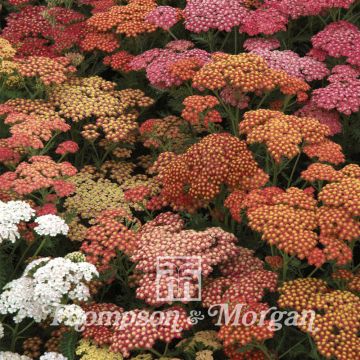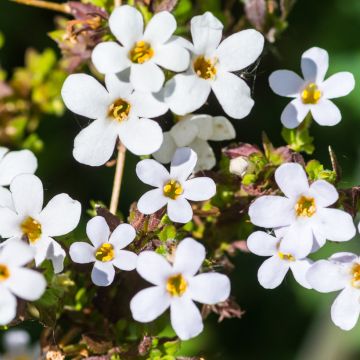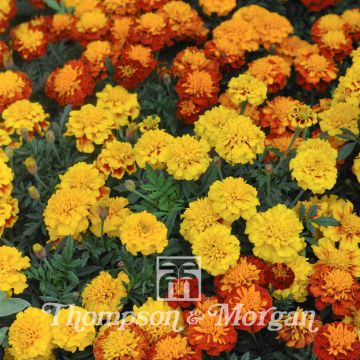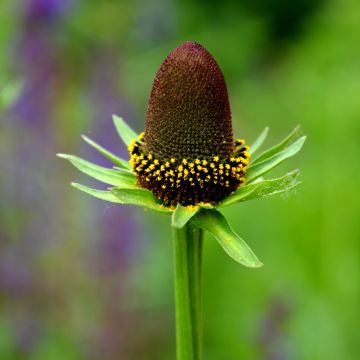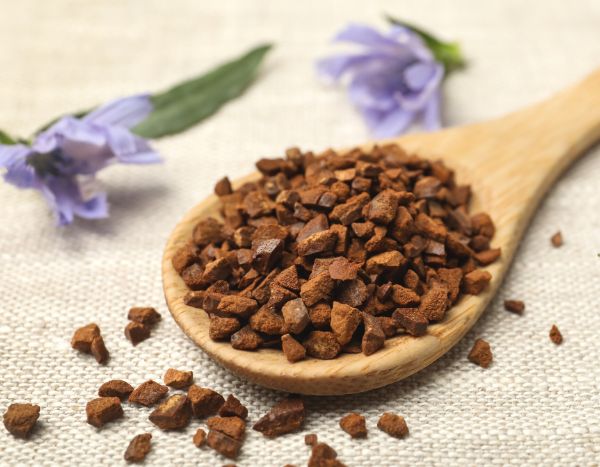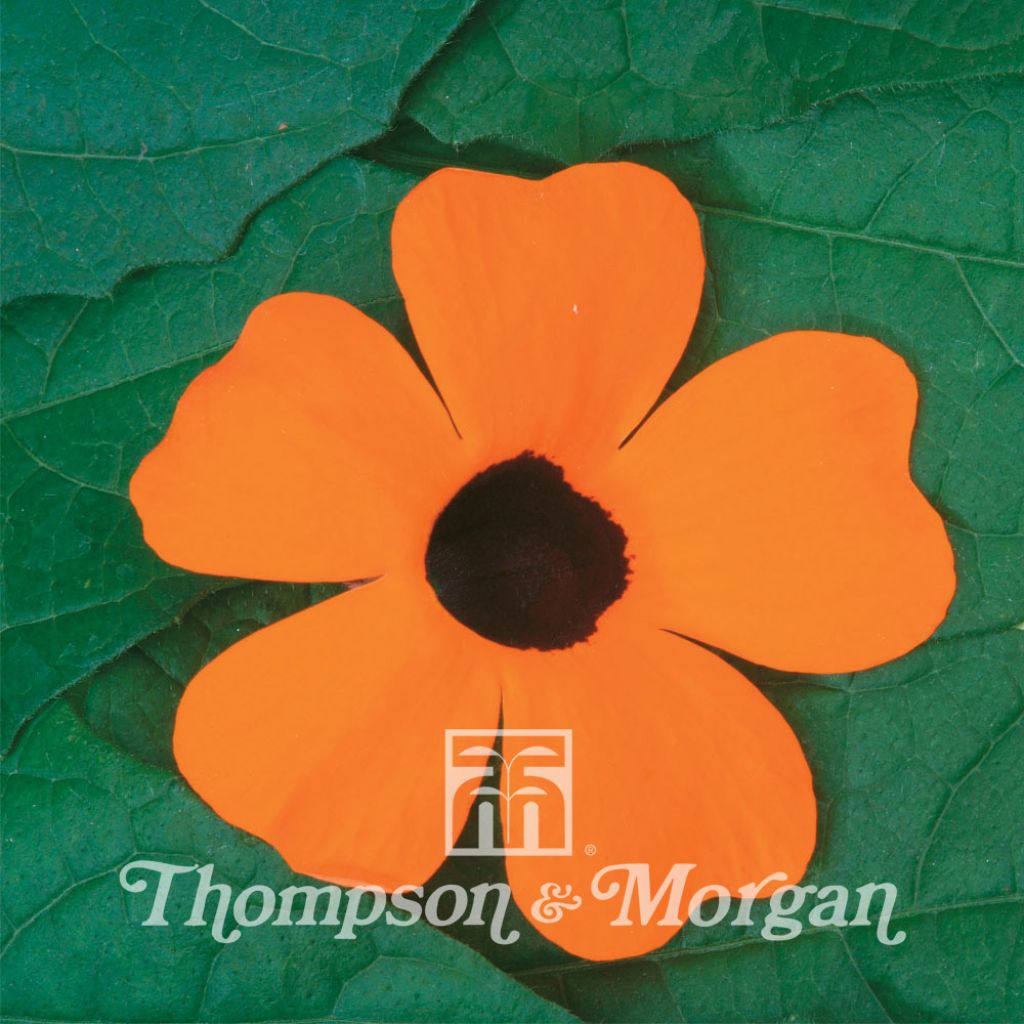

Thunbergia alata - Black-eyed Susan Vine Superstar Orange Seeds
Thunbergia alata - Black-eyed Susan Vine Superstar Orange Seeds
Thunbergia alata Superstar orange
Black-eyed Susan
Splendid.
agnes O., 18/09/2017
Special offer!
Receive a €20 voucher for any order over €90 (excluding delivery costs, credit notes, and plastic-free options)!
1- Add your favorite plants to your cart.
2- Once you have reached €90, confirm your order (you can even choose the delivery date!).
3- As soon as your order is shipped, you will receive an email containing your voucher code, valid for 3 months (90 days).
Your voucher is unique and can only be used once, for any order with a minimum value of €20, excluding delivery costs.
Can be combined with other current offers, non-divisible and non-refundable.
Home or relay delivery (depending on size and destination)
Schedule delivery date,
and select date in basket
This plant carries a 6 months recovery warranty
More information
We guarantee the quality of our plants for a full growing cycle, and will replace at our expense any plant that fails to recover under normal climatic and planting conditions.

Would this plant suit my garden?
Set up your Plantfit profile →
Description
The black-eyed Susan vine Superstar Orange or Thunbergia alata is a climber that blooms abundantly from June to October. It spontaneously wraps itself around any type of frame: whether artificial (barrier, tepee, trellis, fence) or natural (corn, tall grass). Its flowers are of a very deep orange and feature a black eye, that looks like a pupil in the centre of an iris. This is also what has earned it its nickname.
In many parts of the world, this perennial is considered invasive because of its rapid growth. In our climates, it is considered an annual that thrives in sunny positions, although it tolerates partial shade. You can also find a place for it in the conservatory where it will be able to grow in the warmer conditions, as it appreciates temperatures above 8 °C. This way you will enjoy its flowers from late spring to early autumn (even more so if the weather stays mild). Its stems are long and twining, so make sure you provide it with a frame that they will happily envelop. They are generously covered with dark green, rather large (6 cm), elongated, heart-shaped leaves. They can form a dense carpet strewn with an abundance of flowers, made up of tubular corolla which are divided into five lobes. Their orange colour and their black centre gives them an original look.
This black-eyed susan vine is a real ally for masking unsightly backdrops or for covering walls thoroughly, as long as it finds a solid stem or wire to climb up on. Otherwise, it will spread out and behave as a ground cover. It prefers moist, but well-drained soils and needs watering in extremely hot weather. Fertilizer will enhance its exuberance. It will bring a lively touch in pots or at the back of beds, thanks to its fresh flowers, its intrepid stems and the many insects it will attract.
Report an error about the product description
Flowering
Foliage
Plant habit
Botanical data
Thunbergia
alata
Superstar orange
Acanthaceae
Black-eyed Susan
Cultivar or hybrid
Other Thompson and Morgan seeds
View all →Planting and care
Black-eyed Susan vine Superstar Orange is best sown under cover in a tray from March onwards. If frosts persist in your area, wait until April as the seeds will prefer a temperature between 20 and 25 °C.
Cover the seeds with a fine layer of compost (6 mm) and keep it slightly moist. They will emerge between 14 and 21 days. Take care to leave the trays in the sun, as the seeds need it to germinate. When the seedlings are big enough to be moved, you can separate them and put them in little pots if the frost period is not over, and keep them in a warm place until planting out in the open ground in May. They can also be placed in planters or pots. You can acclimatize them gradually if the nights are still cool by placing them outside during the day. Don't forget to water the Thunbergia regularly when they are in tubs: they don't like extended drought. On the other hand, do not leave the soil to become too soggy and empty the saucers.
Do not forget to stake and to feed plants fertilizer if you want them to climb and flower abundantly.
Sowing period
Intended location
Planting & care advice
-
, onOrder confirmed
Reply from on Promesse de fleurs
Haven't found what you were looking for?
Hardiness is the lowest winter temperature a plant can endure without suffering serious damage or even dying. However, hardiness is affected by location (a sheltered area, such as a patio), protection (winter cover) and soil type (hardiness is improved by well-drained soil).

Photo Sharing Terms & Conditions
In order to encourage gardeners to interact and share their experiences, Promesse de fleurs offers various media enabling content to be uploaded onto its Site - in particular via the ‘Photo sharing’ module.
The User agrees to refrain from:
- Posting any content that is illegal, prejudicial, insulting, racist, inciteful to hatred, revisionist, contrary to public decency, that infringes on privacy or on the privacy rights of third parties, in particular the publicity rights of persons and goods, intellectual property rights, or the right to privacy.
- Submitting content on behalf of a third party;
- Impersonate the identity of a third party and/or publish any personal information about a third party;
In general, the User undertakes to refrain from any unethical behaviour.
All Content (in particular text, comments, files, images, photos, videos, creative works, etc.), which may be subject to property or intellectual property rights, image or other private rights, shall remain the property of the User, subject to the limited rights granted by the terms of the licence granted by Promesse de fleurs as stated below. Users are at liberty to publish or not to publish such Content on the Site, notably via the ‘Photo Sharing’ facility, and accept that this Content shall be made public and freely accessible, notably on the Internet.
Users further acknowledge, undertake to have ,and guarantee that they hold all necessary rights and permissions to publish such material on the Site, in particular with regard to the legislation in force pertaining to any privacy, property, intellectual property, image, or contractual rights, or rights of any other nature. By publishing such Content on the Site, Users acknowledge accepting full liability as publishers of the Content within the meaning of the law, and grant Promesse de fleurs, free of charge, an inclusive, worldwide licence for the said Content for the entire duration of its publication, including all reproduction, representation, up/downloading, displaying, performing, transmission, and storage rights.
Users also grant permission for their name to be linked to the Content and accept that this link may not always be made available.
By engaging in posting material, Users consent to their Content becoming automatically accessible on the Internet, in particular on other sites and/or blogs and/or web pages of the Promesse de fleurs site, including in particular social pages and the Promesse de fleurs catalogue.
Users may secure the removal of entrusted content free of charge by issuing a simple request via our contact form.
The flowering period indicated on our website applies to countries and regions located in USDA zone 8 (France, the United Kingdom, Ireland, the Netherlands, etc.)
It will vary according to where you live:
- In zones 9 to 10 (Italy, Spain, Greece, etc.), flowering will occur about 2 to 4 weeks earlier.
- In zones 6 to 7 (Germany, Poland, Slovenia, and lower mountainous regions), flowering will be delayed by 2 to 3 weeks.
- In zone 5 (Central Europe, Scandinavia), blooming will be delayed by 3 to 5 weeks.
In temperate climates, pruning of spring-flowering shrubs (forsythia, spireas, etc.) should be done just after flowering.
Pruning of summer-flowering shrubs (Indian Lilac, Perovskia, etc.) can be done in winter or spring.
In cold regions as well as with frost-sensitive plants, avoid pruning too early when severe frosts may still occur.
The planting period indicated on our website applies to countries and regions located in USDA zone 8 (France, United Kingdom, Ireland, Netherlands).
It will vary according to where you live:
- In Mediterranean zones (Marseille, Madrid, Milan, etc.), autumn and winter are the best planting periods.
- In continental zones (Strasbourg, Munich, Vienna, etc.), delay planting by 2 to 3 weeks in spring and bring it forward by 2 to 4 weeks in autumn.
- In mountainous regions (the Alps, Pyrenees, Carpathians, etc.), it is best to plant in late spring (May-June) or late summer (August-September).
The harvesting period indicated on our website applies to countries and regions in USDA zone 8 (France, England, Ireland, the Netherlands).
In colder areas (Scandinavia, Poland, Austria...) fruit and vegetable harvests are likely to be delayed by 3-4 weeks.
In warmer areas (Italy, Spain, Greece, etc.), harvesting will probably take place earlier, depending on weather conditions.
The sowing periods indicated on our website apply to countries and regions within USDA Zone 8 (France, UK, Ireland, Netherlands).
In colder areas (Scandinavia, Poland, Austria...), delay any outdoor sowing by 3-4 weeks, or sow under glass.
In warmer climes (Italy, Spain, Greece, etc.), bring outdoor sowing forward by a few weeks.






























